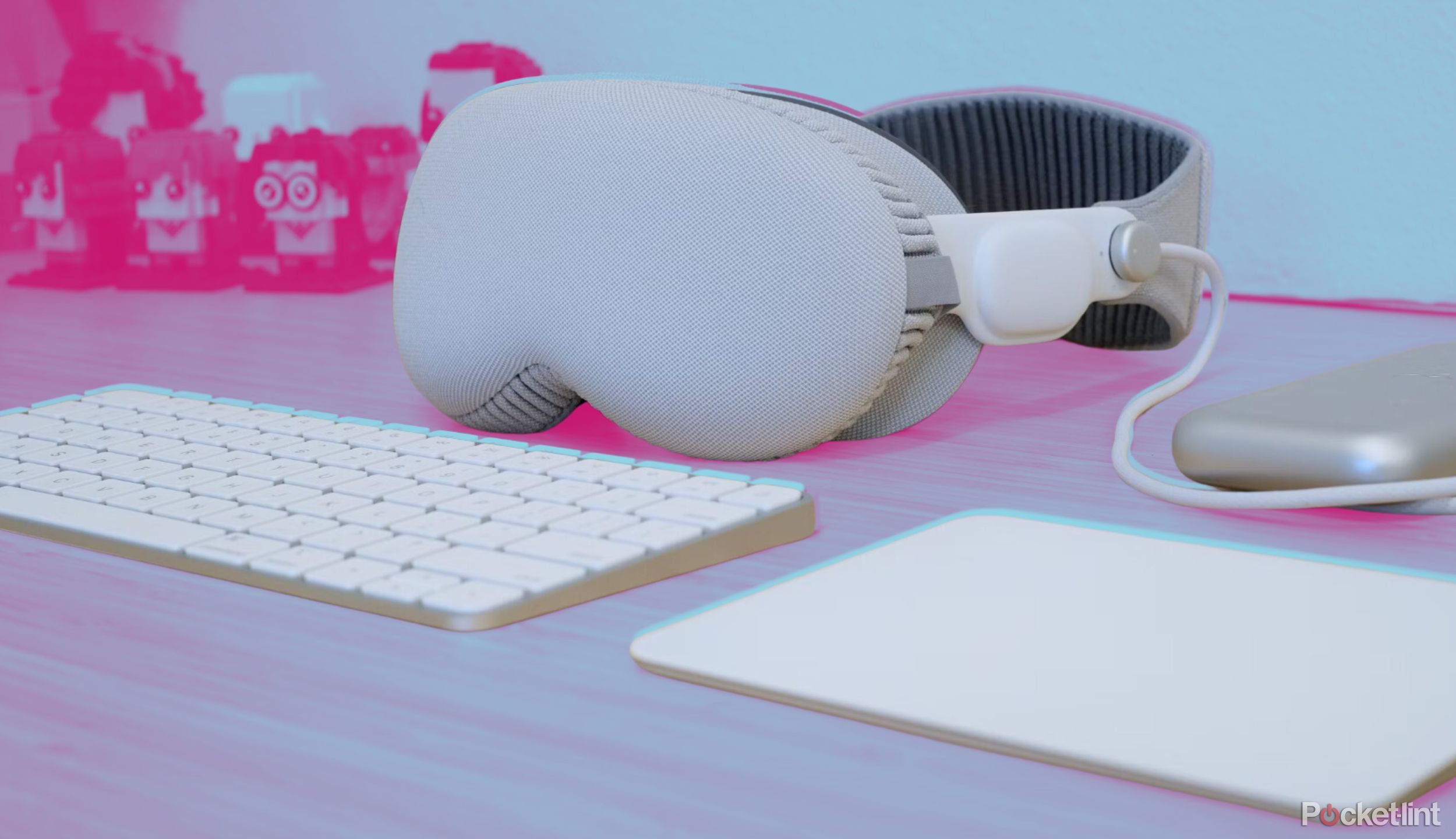Key Takeaways
- Apple Vision Pro was released in the United States in February and recently expanded internationally.
- Apple Vision Pro is a brand-new product introducing consumers to visionOS and spatial computing for the first time.
- Apple Vision Pro has a tremendous amount of future potential.
I’m an Apple fanboy, without a doubt. So, when Apple announced not only a new product but an entirely new platform, I was enthralled. After selling my kidney to pay for it, my only challenge was understanding where this new spatial computer would fit in my workflow. After all, Apple Vision Pro faces a considerable challenge. It’s more iPad than Mac. Those who can do their work on iPadOS can probably do it on visionOS.
What I appreciate about my Apple devices — my iPhone, iPad, MacBook, and Apple Watch — is that each has a unique specialization within my workflow. My iPhone is for communication and taking photos. My iPad is for lighter tasks like writing and watching YouTube. My MacBook is for the bulk of my work. And my Apple Watch is for fitness tracking and notification triage. This leaves a unique question: where does the Apple Vision Pro fit into my workflow?
What I like about Apple Vision Pro
I can see the future potential
Braden Newell / Pocket-lint
Before the Vision Pro, virtual reality headsets offered two purposes: gaming and content consumption. Apple is trying to convince us of a third, professional work. Having recently purchased an Apple Vision Pro, thanks to the product’s international expansion, I was excited to see how spatial computing could impact my workflow. I’m not a gamer myself, so I started with content consumption. Admittedly, making a massive screen to watch YouTube videos in Juno or Star Wars in Disney+ while in a land speeder on Tatooine is impressive.
As the weekend came to a close and work needed doing, I was excited to see where the Vision Pro could be useful. I created my Persona over the weekend and began joining Zoom calls in my new translucent appearance. While the reactions were entertaining, I can see the value of having a perfectly presentable me ready at any time. Plus, the Vision Pro allowed me to take calls without worrying about anyone walking into my camera feed, my angle, or the mess around me. It doesn’t matter when it comes to spatial computing.
During my video calls, I’d typically join from Zoom in visionOS and use my MacBook with Mac virtual display. Having Zoom open on my side and working on this massive Mac display was pretty great. I didn’t try several apps simultaneously, but began to see the value spatial computing could offer to productivity junkies like myself. Another workplace benefit was practicing presentations in Keynote. Keynote is my favorite presentation app, and being a native visionOS app, Keynote has a boardroom and Theater environment for practicing presentations. As an avid presenter, I love this.
Lastly, I want to highlight the magic of spatial photos and videos because I believe this technology could be a game changer in the future. Before buying the Apple Vision Pro, I recorded a few videos of my dogs, and it’s challenging to describe how big the smile was on my face when watching those videos in visionOS. I’ll admit, spatial video captured with Apple Vision Pro almost made me sick, but video captured with my iPhone didn’t. Nevertheless, I can see how this immersive feature can help people continue to relive their most precious memories.

Related
I tried using the Apple Vision Pro all day for work — here’s how it went
Despite what Apple suggests, using the Vision Pro headset for everyday work tasks can be a real struggle. But I’ve found ways to, well, make it work.
What I dislike about Apple Vision Pro
I don’t get VR
Braden Newell / Pocket-lint
My initial experience with Apple Vision Pro was at a Minneapolis Apple Store while traveling. The first thing I remember when putting the demo unit on was seeing a TV flicker to my left because of the different refresh rates of the two devices. My brain then wonders, is this it? Is this dark, kind of fuzzy, not quite the right color world that everyone has been hyping? I get that media experiences were probably well-curated, but that was when I felt a genuine disconnect between what the media reports and what the average user experiences.
Obviously, the price is the first challenging thing to stomach. I can accept that spending billions of dollars on research and development, along with using the best hardware, is expensive. Still, when Apple seemingly struggles to sell the limited 500,000 units rumors suggest the company plans to manufacture, maybe the price is too high.
A ramification of a brand-new platform with a limited run and an intensely high price tag is that the app story is still incomplete. Apple is fortunate to have gotten major developers like Microsoft, Zoom, and WebEx, along with independent developers that have created great apps like CARROT Weather, Fantastical, and PCalc. Unfortunately, that’s still not enough. While iPad compatibility apps like Slack and Spark are something, their tap targets are too small for the imposition that is eye tracking.
“I constantly had challenges typing with eye tracking, jetting my eyes over to see what I was typing, only for the keyboard to get confused.”
Alongside that, major apps like Netflix and YouTube aren’t even there, limiting the potential for content consumption on Apple Vision Pro. That’s all while also ignoring the fact that Apple has numerous apps that are still not native to visionOS. How has Microsoft created Word and Excel apps for visionOS while Pages and Numbers aren’t? It’s challenging for me to take this platform seriously when some teams within Apple don’t seem to be.
Speaking of the challenges with eye tracking, it’s cool, very cool — but it’s terribly inaccurate. The vast majority of the time, yes, eye tracking works, but it’s incredibly frustrating when it doesn’t. Multiple times when joining Zoom calls, I messed up selecting my audio input because of eye tracking. Similarly, I constantly had challenges typing with eye tracking, jetting my eyes over to see what I was typing, only for the keyboard to get confused. That also ignores the fact that typing with eye tracking is slower than a turtle racing a snail.

Related
One month with Apple Vision Pro: I get it now. I’m obsessed
Despite my initial skepticism of Spatial Computing, and the hurdles to get eye lenses, Apple Vision Pro is wildly impressive.
Where does Apple Vision Pro sit in my workflow?
With its price, no where
Braden Newell / Pocket-lint
To be frank, it doesn’t. I’m returning the Apple Vision Pro. I’m both disappointed and relieved. On the one hand, yes, I wanted to keep Apple Vision Pro and find it a place in my workflow. But in practice, I’m thrilled to get my money back. I assure you that there’s nothing I want more than to love another of Apple’s platforms. I want to experience the magic I felt when trying AirPods for the first time in 2016 or what others reported when trying spatial computing for the first time.
Going back to the introduction and wondering where the Apple Vision Pro might fit in my workflow, I think I found it to be a device for always having a suitable appearance for group meetings and reliving memories through spatial video. The challenge is it’s difficult to convince myself to spend $3,499 on a headset when everything I do in it is slower and less convenient than using my Mac or iPad.
When my partner first saw the eyesight feature, she said, and I quote, “You look creepy.” My uncle followed up with similar comments; he asked, “So, what’s the point?” And, honestly, I don’t know.
Perhaps if Apple came in at a $2,000 price point, I could convince myself to keep it. I love the idea of watching a movie in visionOS, but when my partner and I typically watch content together, the Vision Pro is entirely impractical. When my partner first saw the eyesight feature, she said, and I quote, “You look creepy.” My uncle followed up with similar comments; he asked, “So, what’s the point?” And, honestly, I don’t know.
While I can see the future Apple Vision Pro can unlock, in its current state, I get queasy 40 minutes into using it. I can’t make out my iPhone or Apple Watch display, and everything feels more challenging. It isn’t the weight that bothers me but the strain it puts on my eyes — the feeling of exhaustion when removing it after 90 minutes. The Apple Vision Pro is undoubtedly a platform to watch and follow, but for now, I’m not convinced VR, AR, or even XR is the future. To me, Apple’s Vision Pro is a product searching for a problem, not a product providing a solution to one.

Related
Apple Vision Pro vs. Meta Quest 3: What’s the difference?
Apple’s Vision Pro is a natural competitor for the highly touted Meta Quest 3, even if both are wildly different. Here is everything you need to know.
















